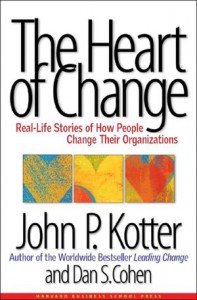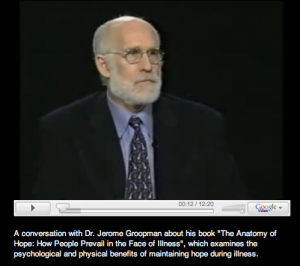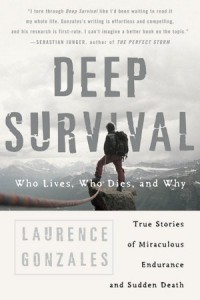by Robert S. Tipton
 With all due respect to Nike’s marketing department (who was focusing on ending procrastination — which is an altogether different topic), it is often difficult for individuals and organizations to resist the siren call of “just do it.”
With all due respect to Nike’s marketing department (who was focusing on ending procrastination — which is an altogether different topic), it is often difficult for individuals and organizations to resist the siren call of “just do it.”
We’re bombarded by marketing messages telling us to get more done more quickly — like “30 pounds in 30 days” or other such nonsense.
Then, “to get on with the doing,” too often we will follow the tried and true (so we think) approach of “plan the work, then work the plan.” Unfortunately, this approach results in only marginal (or zero!) improvements in performance over time — and requires massive expense and willpower to “make” the person or organization move in the appropriate directions — like losing weight.
Now, you might disagree, but the science behind everything says it’s really pretty simple for most people to lose weight. Losing weight is just the process of increasing metabolism and reducing calories. However, losing weight isn’t really the hard part. It’s “keeping it off” that sabotages most everyone. THAT requires a completely different approach to change.
Want some data? If you look at the numbers, you’d understand that traditional diets really don’t work — even though the size of the diet industry in the United States alone is some $40B (CNBC, 2010). Worldwide dieting is a $55B industry! Holy cow. But, studies — like the one from 2006 in The New England Journal of Medicine — report that “most people who participate in weight-loss programs ‘regain about one-third of the weight lost during the next year and are typically back to baseline in three to five years.'”
No ROI on your $40 BILLION? Other than the US Federal Government (grin), who would put up with those results?
Don’t believe the research? Ask your neighbor, friend or relative. I’d be willing to bet that you’d hear that most people who diet regularly actually wind up weighing MORE in the long run — as they “yo-yo” from one diet to another.
Why? Because most people simply approach their diets the same way they approach their organizational change efforts. They put together (or buy) a plan, and then they work their plan. And create zero ROI.
Plan the Work, Work the Plan?
 I use a quote from Dr. John Kotter of the Harvard Business School in my keynote presentations all the time:
I use a quote from Dr. John Kotter of the Harvard Business School in my keynote presentations all the time:
“Most leaders and managers subscribe to a theory of change that is a variation of a ’plan-execute’ model. However, this model has repeatedly been a recipe for failure and disappointment, and the cost of failed change in terms of money, morale and lost opportunity is staggering.”
This quote usually elicits a similar response from every audience — most of the attendees look at me with incredulous expressions that say:
“Well, ‘I’m’ one of those leaders… Isn’t that the way we’ve been taught to implement changes? Plan the work and then work the plan?”
I pause. I shift my gaze from person to person. (Imagine me doing that with you as you read this…) And then I answer their unasked (verbally at least) question:
“So… If plan/execute is a recipe for disappointment, what’s the missing ingredient?”
They sit forward in their chairs.
I continue, “Hope. Hope is the rocket fuel for successful change, and without it, change is hopeless.”
Smiles replace furrowed brows, I hear some chuckling, and their expressions soften — if only for a few seconds — because I ask another troubling question almost immediately.
“Okay, how many of YOUR change efforts — either personally or professionally — are fueled by hope instead of fear, or threats, or shame, or coercion, or anger, or significant illness, or, or, or?”
The room is silent. I wait.
Then, I smile and continue, “So — would you agree that most change efforts are doomed because they are hope-less from the start? How about approaching change differently from the beginning, and using hope as the rocket fuel? Do you think your change effort has a better chance of success if you hope it will succeed?”
Their faces brighten once again, and we’re off to the races for the rest my presentation.
H.O.P.E.
Hope. Or as I like to say, H.O.P.E. — Heart-Felt Optimism Powering Expectations.
Doesn’t that sound great? Okay, for some of you it sounds a little fuzzy, or too “woo-woo” to be taken seriously. However, some really smart and experienced people have something else to say about hope. To Jerome Groopman and Lawrence Gonzales hope is CENTRAL to succeeding in grim situations — health challenges, shipwrecks, getting lost in the woods, plane crashes, etc.
 So, let’s talk about Dr. Jerome Groopman (Author of “The Anatomy of Hope: How People Prevail in the Face of Illness“)…
So, let’s talk about Dr. Jerome Groopman (Author of “The Anatomy of Hope: How People Prevail in the Face of Illness“)…
Dr. Groopman is a pretty smart guy — here’s a list of his credentials according to Wikipedia, “Jerome Groopman has been a staff writer in medicine and biology for The New Yorker since 1998. He is also the Dina and Raphael Recanati Chair of Medicine at Harvard Medical School, Chief of Experimental Medicine at Beth Israel Deaconess Medical Center, and author of five books, all written for a general audience. He has published approximately 150 scientific articles and has written several Op-Ed pieces on medicine for The New York Times, The Washington Post, and The New Republic.”
Pretty good credentials, yes? And he’s an MD — a scientist. What does he say about hope? Here are three of his quotes:
“Hope can be imagined as a domino effect, a chain reaction, each increment making the next increase more feasible… There are moments of fear and doubt that can deflate it.”
“To hope under the most extreme circumstances is an act of defiance that permits a person to live his life on his own terms. It is part of the human spirit to endure and give a miracle a chance to happen.”
“True hope is clear-eyed. It sees all the difficulties that exist and all the potential for failure, but through that carves a realistic path to a better future.”

Then there’s Lawrence Gonzales, a journalist and author of “Deep Survival: Who Lives, Who Dies and Why“ .
In this book he reports the outcomes of years of studying catastrophes — where death is a possibility (and too often, a reality): plane crashes, ship wrecks, mountain climbing accidents, etc. He then compiled a list of “12 Rules of Survival.” Guess what the first one says? (okay, you don’t have to — I’ve included it below):
Rule of Survival #1:
Perceive and believe. Don’t fall into the deadly trap of denial or of immobilizing fear. Admit it: You’re really in trouble and you’re going to have to get yourself out. Survivors don’t candy-coat the truth, but they also don’t give in to hopelessness in the face of it. Survivors see opportunity, even good, in their situation, however grim.
Hmmm… Hope. H.O.P.E. — it’s central to survival and to dealing with significant illness.
On the other hand, do you want to guarantee that change will fail? Motivate people primarily from the place of fear. Forcing the need to change (using the “plan the work, work the plan” approach by itself) pushes people into hopelessness quickly. They lose H.O.P.E and become cynical, feel marginalized, and stop giving their best efforts. And — they wind up gaining back (at least) all the weight they’ve lost. Hope-less.
CLEARLY, there’s a better way to make change REAL.
Why not START with being hope-full? Why not? What might be different if you hope more and fear less? I’m thinking your change efforts — both personally and professionally — will be FAR more successful FAR more often.
I might even go so far as to say “wait” to start your change effort until you are filled with H.O.P.E.
Out of the Mouths of Babes
Recently I read a story (from a few years ago) about a social worker who was with a group of children of various ages who had serious illnesses. The social worker asked the kids to imagine that hope is an animal and to describe what hope, the mythical animal, looks like. Here is what they said:
- Hope is about two and a half feet tall.
- Hope smiles a lot and has blue eyes and a short tail that wags. It is the color of sunshine and happiness.
- When hope talks, you are the only one who can hear it.
- Hope raises its voice sometimes. It has to talk louder than fear.
- Sometimes you can coax it to come to you, but most of the time you have to be patient and wait. Then it will come to you.
Finally… Here’s another description of what hope might look like that comes from Erma Bombeck’s book about kids fighting cancer, “I Want to Grow Hair, I Want to Grow Up, I Want to Go to Boise”:
“Hope has offspring like any other animal. They are called “Hopelets.” You don’t keep them. You share them with other people who need one.”
Do you have enough hope — especially for yourself?
What about having a “reproducing” hope that creates “hope-lets” that you share with others?
Dr. Groopman would call “hope-lets” the “domino effect” — I call it amazing.
Have H.O.P.E. Share H.O.P.E. It matters.
.





6 Responses to “Why “Plan the Work, Work the Plan” Is Hope-Less”